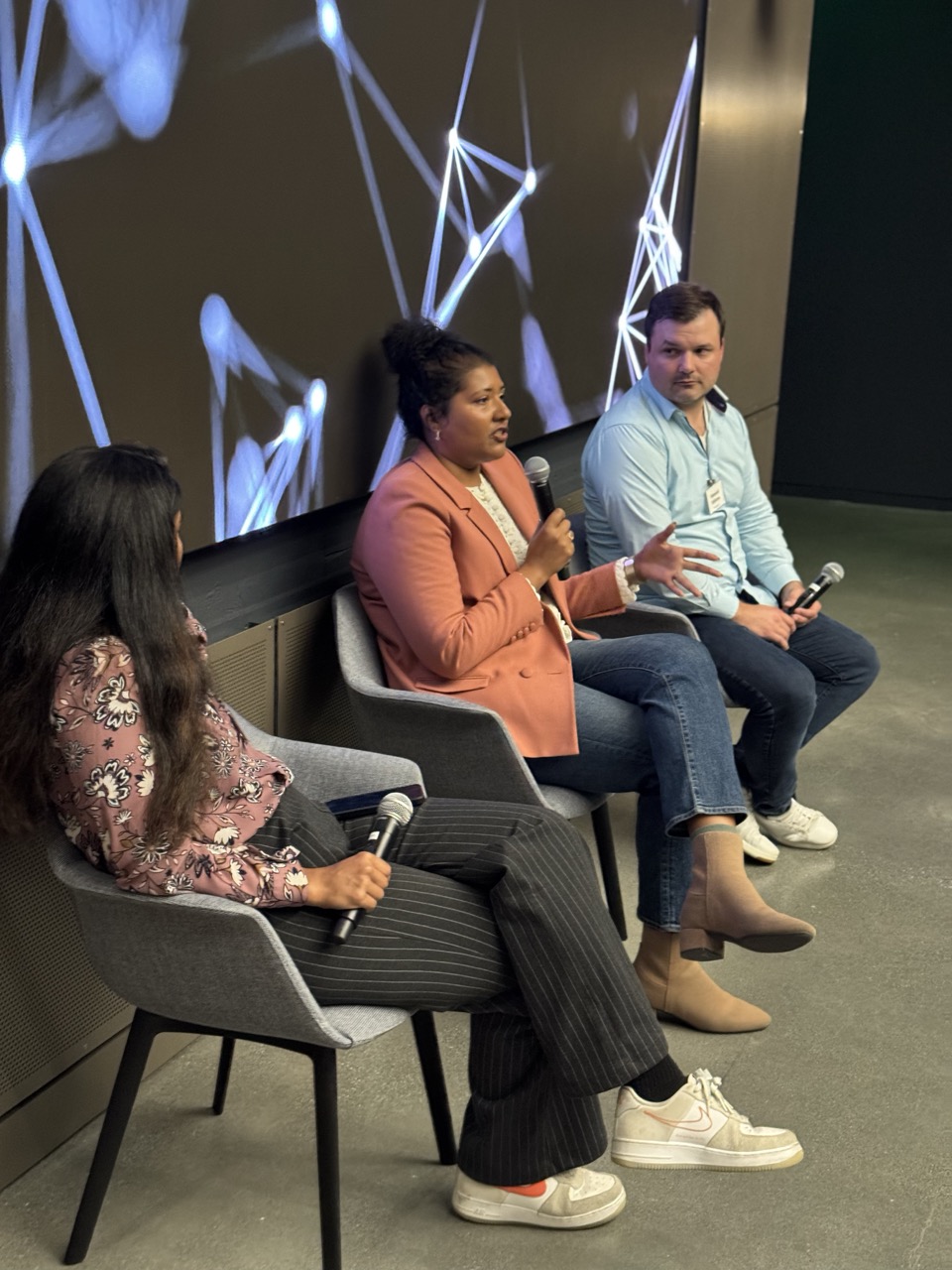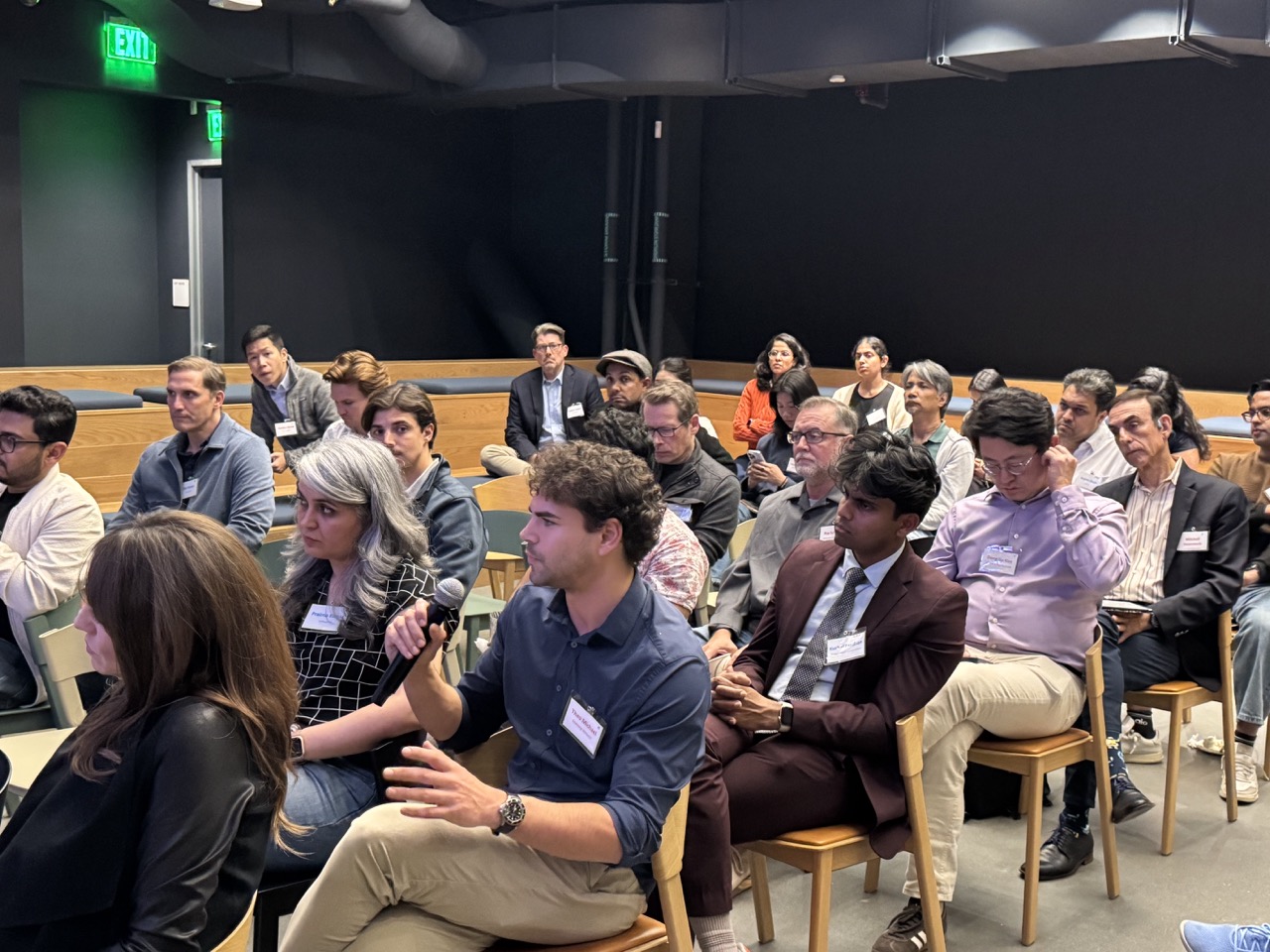The Agentic Shift: How Enterprises are managing the ever-changing landscape?

For founders, winning in the agentic era means understanding how corporate buyers move from curiosity to commitment. Insights from our fireside chat with leaders from Cisco and Snorkel AI.
The whiplash of AI innovation is a constant for enterprise leaders. Just last year, Co-pilots were the star, prompting companies to rethink everything from code to customer service. Now, the landscape has pivoted once again: agents and agentic workflow are the new rage, promising autonomous execution and complex problem-solving. This speed naturally raises a critical question: Can enterprises truly adopt these products as fast as they hit the market?
A couple weeks ago, we sat down with Vasudha Gambhir (VP of Commerce and Growth Acceleration at Cisco) and Max Williams (AI Success Manager at Snorkel AI) to discuss the application of AI agents at the enterprise. We unpacked how enterprises like Cisco evaluate, discover, select, and implement these products and how startups like Snorkel approach their value proposition. Here is what we learned.

Building vs. Buying? Its a combination of both.
While enterprises are building their own agents, there's still overwhelming interest in third-party solutions. A recent example of the “build your own,” Intuit recently announced it is building custom financial LLMs to power their platforms: TurboTax, Quickbooks, CreditKarma, and Mailchimp. Unsurprisingly, enterprises can't simply buy off-the-shelf solutions—customization and use-case-specific matching are essential.
We expect to see a multi-vendor stack powering both internal agentic workflows and third-party agent interactions. During our fireside chat, Vasudha reinforced that there will be a multi-vendor approach to mitigate dependency risk.
“Corporations are diversifying their vendor portfolio—to mitigate the widespread concern over price locking with a single provider.”
-Vasudha Gambhir, VP of Commerce and Growth Acceleration at Cisco

Beware: The Pilot to Production Chasm
Just as only a small fraction of startups ever reach meaningful scale, the same holds true for enterprise AI initiatives. According to MIT’s State of AI in Business report, only 5% of custom enterprise AI tools make it into production. While we see productivity tools like ChatGPT gain increased utilization at the individual employee level, there is still widespread concern around Data Privacy when it comes to enterprise subscription with AI something Vasudha reiterated; “I care about how you are accessing my data and what you’re doing with it.”
How do Enterprises Find these Solutions?
Market awareness and problem identification don't flow from the top down. This isn't a new idea—product led growth (PLG) emerged from bottom-up adoption in traditional SaaS. The question: can the same hold true for AI, even when data security is a major concern? In short, yes. Tools that can show ROI to critical workflows can pass through the pilot chasm. The discovery process (per the discussion) can be boiled down to three categories.
- The Logical Extension: Former employees who understand a company's specific problems leave and build solutions for those exact issues, creating an immediate, trusted sales channel.
- Friends and Family Bets: The operator network—peer leaders constantly looking for things that offer immediate ROI—acts as a high-speed referral system, sharing successes and encouraging colleagues to take a bet.
- Internal Forces: Security concerns often push internal teams toward building their own AI stack to ensure proper data access and control. Through this process, teams are testing different solutions that will either augment or power their internal infrastructure. It’s safe to assume internal teams are more aware of the market landscape than presumed.

Strategic differentiation is paramount in solving the cold-start problem.
During the fireside chat, Max highlighted their evaluation process."It's about defining what you have in common and—more importantly—what sets you apart."
-Max Williams, AI Success Manager at Snorkel AI
In parallel, Vasudha explained that enterprises are more open and collaborative when you clearly define which problems your product can solve.
"I would rather you do 2 out of the 10 things I need help with than promise me you can solve all."
-Vasudha Gambhir, VP of Commerce and Growth Acceleration at Cisco
While this seems obvious, it's understandable that in a market focused on speed of conversion, founders can feel pressure to over-promise.
Essential: Speed to Proof
However, as we see appetite to adopt signaled by enterprises, “speed to proof” becomes the main KPI. The ultimate ask from a buyer is, "Show me how it works." This can cut down the process to two weeks, as Vasudha stated, if you can demonstrate a working solution with my own dataset.

Once ready to buy, how do you solve for enterprise readiness?
The Forward-Deployed Solution
Two things become clear at this point; enterprise adoption of an agentic solution will not be straightforward and startups must accept a tailored checklist is non-negotiable for enterprise readiness.
This results three key dependancies.
- Preparing your existing infrastructure: The company must have its internal data and infrastructure issues resolved before a new product can be effectively integrated.
- Validating the Problem Statement to the Product: Confirming the two to three areas where the most value can be created. Such as, prototyping with synthetic data.
- Standing Up a Team: Adoption is resource-intensive. Companies must be prepared to dedicate talent, like a data engineer, specifically to adopt and maintain the new product.
While Forward Deployed Engineers (FDE) are not a new concept, they are becoming increasingly more common for AI companies. In a space moving this quickly, FDEs are the critical bridge and a budget re-direct. Enterprises can now pay the startup to implement minimum viable set of requirements and processes to make the company ready to adopt the initial product. Het Trivedi, in his article **What I Learned As A Forward Deployed Engineer Working At An AI Startup** stated that “FDE is like being an engineer, salesman, customer support representative, and model performance engineer all in one person.” This would otherwise be outsourced to a the system integrator or hiring a new contractor/FTE. They ensure that the product isn't just purchased, but successfully assimilated into the complex, customized reality of the enterprise.
Conclusion: Enterprise purchasing playbook still applies but rate of adoption has shifted.
The discussion with Vasudha and Max offered valuable context on how enterprise buyers are navigating the ever-changing landscape of AI and agentic workflows. What's interesting to highlight: many of the strategies discussed aren't materially different from SaaS. However, the timelines to adopt and the speed of disintermediation are unprecedented. Enterprise players have to be comfortable with faster iterations than before while founders have to continue to prioritize security with their customer data workflows.
---
About Counterpart Ventures
We are a San Francisco based VC fund investing in Seed & Series A enterprise software start-ups. We are investing $1-$5M with an emphasis on speed, conviction, and partnership. What differentiates us is Counter Club. We’ve built the largest rolodex of corporate venture funds (700+) on our platform called Counter Club. This creates meaningful access points to enterprise customer introductions and strategic partnerships for our portfolio companies.
If you’re founder building in the new era of AI to dis-intermediate legacy solutions within the enterprise, we want to hear from you. Please reach out to a member of the team—warm intros are always preferred.


.png)
.svg)



.svg)
.svg)
.svg)